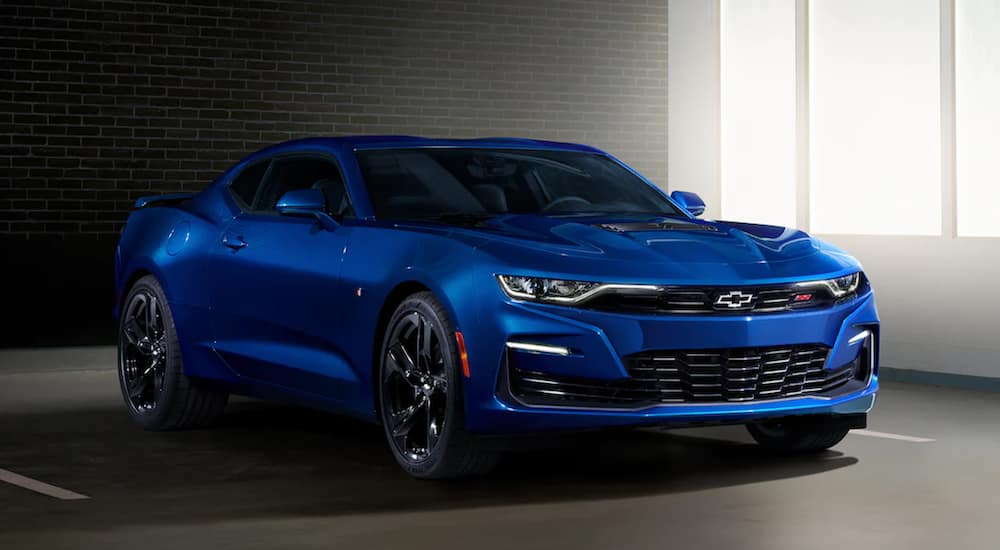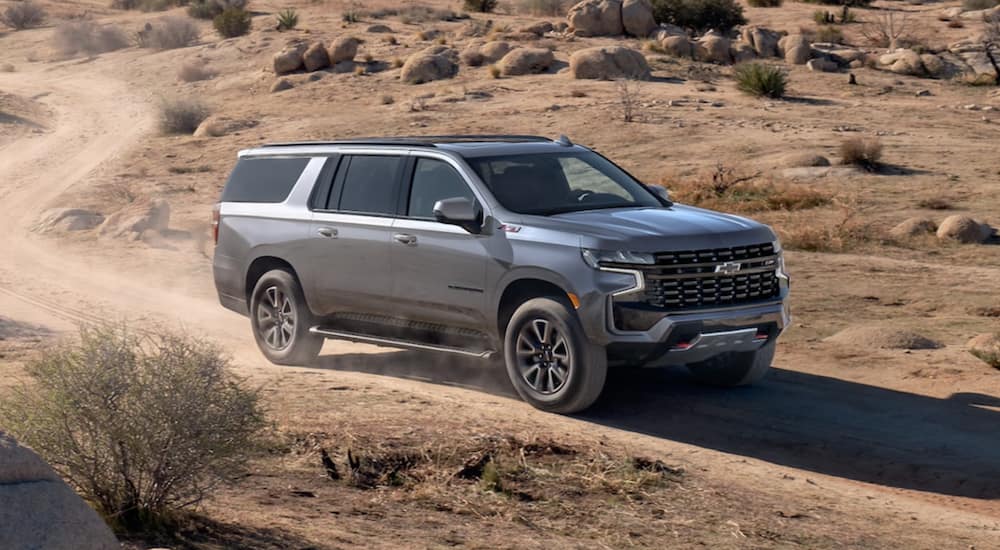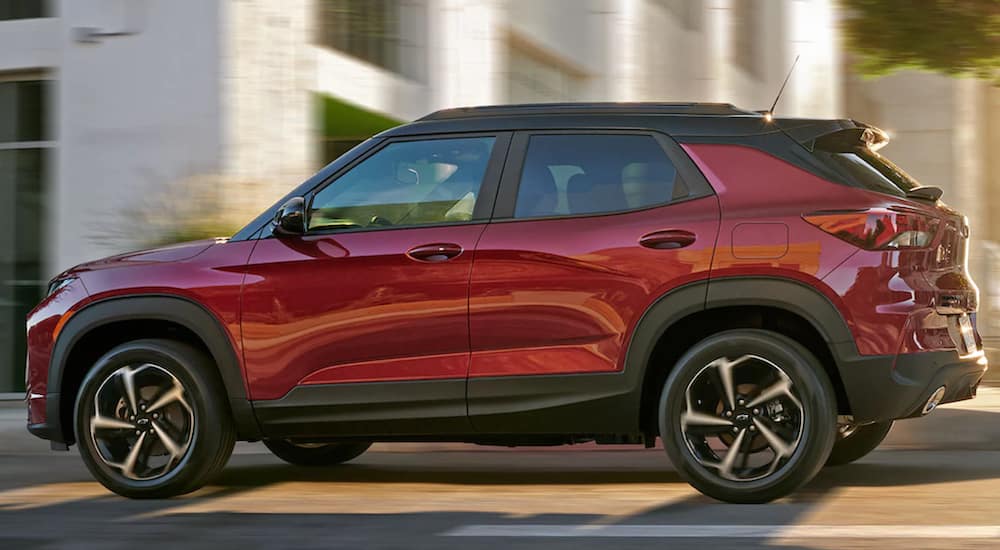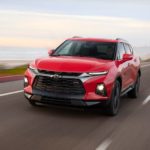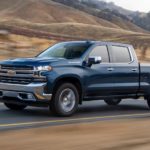If you want to spark a spirited debate, ask a Chevy fan why their Suburban is better than the neighbor’s Expedition, or swing by a job site and ask the superintendent that just pulled up in a Silverado 1500 why their truck is superior to the project manager’s F-150. Better yet, drop by a used Chevy dealer and ask for the facts on reliability, safety, and performance, and decide for yourself.
We love comparisons – especially when they pit rivals against each other – but there’s something extra-entertaining about comparing Chevy and Ford. These two longtime rivals are constantly waging war for market share, seeking the winningest combination of attributes that will get customers through dealership showroom doors. With the goal of getting more drivers behind the wheels of their vehicles, Chevy and Ford work hard to create dynamic products for a wide range of lifestyles. Each company has worthy options in the most popular categories, from compact entry vehicles to pickups to SUVs and crossovers. How they fare in these inter-category battles contributes to determining which brand is the victor over all.
What exactly does “better” mean in this comparison? We decide which brand is better based on a few factors: sales are one component, but overall customer satisfaction, reliability ratings, and third-party safety ratings are also in the mix. We know there are Ford people, Chevy people, and people that don’t care much either way, but for those who subscribe to the idea of brand loyalty, what they drive – and why – matters. Let’s look at a few of the longest and bloodiest Chevy vs Ford battles and see how today’s newest models compare.
Suburban vs Expedition
The Suburban comes out swinging against Ford’s biggest SUV with a complete overhaul for 2021. This newest Suburban combines the latest driver-assist safety technology with a fresh new exterior look and a whole host of available interior appointments that put the Expedition easily in second place. And a distant second place, for that matter.
Insiders revealed that Ford plans to give the Expedition a mid-cycle refresh for the 2022 model year, but a full redesign is still a few years away, at least, according to rumors. That gives the Suburban a clear advantage for at least the next few years. For 2021, the Suburban starts at $52,300. Ford’s Expedition is a bit less expensive, with a starting MSRP of $49,995. That may be its only advantage, though.
A big reason buyers want one of these giant land yachts is for the cargo- and people-hauling capability. If that’s your goal, go straight to your local Chevy dealer. Why? The 2021 Suburban offers 145 cubic feet of cargo capacity. The Expedition: just 105. Even when you upgrade to an Expedition MAX, you’ll only get up to 122 cubic feet. That’s a massive difference, and it’s possible thanks to Chevy’s decision to outfit the Suburban with an independent rear suspension, which lowered the floor and added space.
How about technology? With a new redesign comes an infusion of tech designed to fuse smartphone and vehicle for seamless connectivity when you’re on the move. The Suburban gets a massive 10.2-inch infotainment touchscreen for 2021, which, when compared with the Expedition’s 8.0-inch screen, seems especially generous. In all other tech-related comparisons, the Suburban edges ahead. Maybe some would say it’s an unfair advantage, but we say all’s fair in love and war.
Camaro vs Mustang
Let’s start with MSRP: both vehicles have a sub-$30,000 entry price, which is good news for budget-minded buyers seeking a sporty, performance-oriented vehicle. The Camaro starts off at a super affordable $25,000, while the Mustang is slightly less affordable, at $27,155. Let’s face it, though: if we’re comparing sports cars, we need to look closer at performance.
The 2021 Camaro offers trims with powertrains capable of delivering up to 650 lb-ft of torque, while the Mustang, in its fiercest beast version, delivers just 625. Why is torque important in a performance car? Torque is the measurement of rotational force created by the engine when the car accelerates. Horsepower is merely a byproduct of torque, so when looking at potential performance, torque is a much better indicator as a standard of measure.
Now, let’s look at the price on the high end. The top-of-the-line Mustang Shelby GT500 starts at $72,900. Chevy’s ZL1 Camaro trim comes in much lower, at $63,000. Both vehicles offer standard 20-inch wheels and big V8 engines, but the Camaro’s is a 6.2-liter and the Mustang’s is a 5.2-liter. When it comes to performance, bigger is almost always better.
More things to love about the Camaro: there’s an available mid-range V6 engine. No V6 is offered on the Mustang. We also love that the Camaro is available with an old-school 6-speed manual transmission. Clutch-happy performance drivers will love having that option across the entire Camaro trim range, and you can still opt for an automatic if you prefer. To recap, the Camaro is less expensive at pretty much every trim level, offers more torque, and has a broad range of options.
Trailblazer vs EcoSport
We love the subcompact crossover category because its very existence allows bargain shoppers to buy new without settling for a vanilla sedan. Auto manufacturers across the board have worked hard to deliver well-equipped options with quirky styling designed to help budget-oriented buyers let their personalities be reflected in what they drive. The 2021 Trailblazer starts at a wallet-friendly $19,000. Over at Ford, the comparably-sized EcoSport comes in a little higher, at $19,995.
Size-wise, the Trailblazer offers more room for the price. At 173.5 inches in overall length and with a wheelbase of 103.90 inches, Chevy’s subcompact entrant ekes out a win over the EcoSport, which measures 161.3 inches in overall length and has a 99.2-inch wheelbase. The ever-important torque rating is superior on the Trailblazer, too, coming in at a max of 174 lb-ft versus the EcoSport, which delivers up to 149 lb-ft.
We also like the Trailblazer’s styling much more, thanks to the distinctive two-toned roof and more angular front and rear lines. When properly equipped, the Trailblazer looks a little more aggressive from the front. We credit the dynamic grille and cleverly-placed fog lamps. One big check on the Trailblazer’s side of the equation is the plethora of driver-assist safety features that come standard. The EcoSport offers a few, but Chevy has equipped the Trailblazer with more, including Automatic Emergency Braking with Forward Collision Alert, Front Pedestrian Braking, and Lane Keep Assist with Lane Departure Warning.
A Fight for the Ages
It’s clear that Chevrolet has put the focus on feature-rich options in a range of categories. The company has laser-targeted buyers with long wishlists, catering to budget buyers and performance addicts alike. From the subcompact category to the proving grounds of the ultra-high performance sports coupe segment, Chevy seems to be advancing its technology at a slightly faster pace than its rivals over at Ford.
Here’s the big takeaway: competition always benefits the buyer. We hope these two manufacturing giants continue to push each other to higher and higher standards. As buyers evolve, technology and safety should evolve with them. It seems like Chevy’s getting the message, which means nothing but good news lies ahead.
